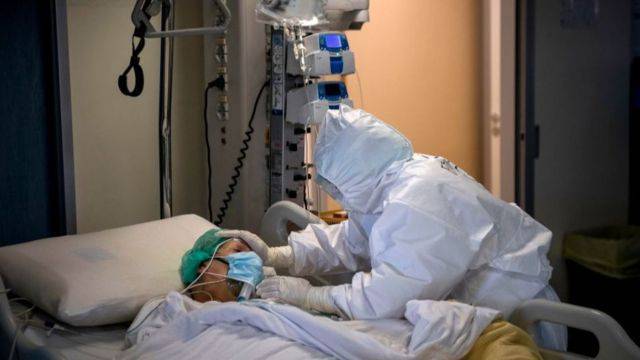Dr. April Baller, a medical officer at the World Health Organization, presented the necessary precautions to follow if a person is infected with COVID-19 and is asked to care for themselves at home, or if they are caring for someone infected with COVID-19, during her appearance on the TV magazine "Science in 5," aired by the WHO website and hosted by Vishmi Gupta Smith.
#### Two Recurring Scenarios
Dr. April Baller stated that there are two recurring scenarios: one where a person is asked to care for themselves or someone with COVID at home. The first scenario often occurs when there is significant strain on the healthcare system, such as due to a sudden increase in cases in the community, like what is happening in many countries currently, and hospital bed capacity is fully or nearly full. In this case, doctors may examine the patient, provide treatment and advice, and then send them home for care.
Dr. April continued, explaining that the second scenario, which is ideal, occurs when patients test positive for COVID-19 via PCR but do not exhibit any symptoms or have very mild symptoms and do not have underlying health conditions like cardiovascular disease or chronic lung disease, typically being younger individuals. These patients can also be cared for at home, but they must stay in regular contact with their healthcare provider for real-time advice.
#### Patient and Caregiver Safety
Regarding the ways to maintain safety for the patient or their contacts, Dr. April emphasized that the most important point is that the patient and the caregiver should remain in a separate room. If that is not possible, the patient should isolate in a particular area of the home, limiting their movement. Furthermore, there should be a minimum distance of one meter maintained between the patient and anyone else. Good ventilation in the patient's room and shared spaces is also essential, meaning there should be fresh air flowing as much as possible through open windows and doors.
Dr. April noted that only one person should act as the caregiver, and this caregiver should not have any underlying health conditions. Additionally, whenever patients receive care, they should wear a medical mask, and the caregiver must follow the same procedure. After leaving the room, the caregiver should ensure to wash their hands thoroughly with soap and water.
She added that dishes, cups, towels, and bed linens should be designated for the patient’s sole use, thoroughly washed with soap and water, and not replaced daily. Dr. April pointed out the importance of frequently cleaning and disinfecting any surfaces touched by the patient. Any waste produced by the patient must be disposed of securely, and receiving visitors during the illness is entirely prohibited.
#### Symptoms and Warning Signs
Regarding symptoms or signs that should prompt immediate consultation with a doctor, Dr. April Baller stated that when caring for patients at home, regular monitoring of their condition is vital. Ideally, this should be done at least once daily for any signs, symptoms, complications, or red flags indicating danger.
She highlighted that signs and symptoms can vary slightly by age group. For adults, complaints might include dizziness or difficulty breathing with chest pain, and they may appear dehydrated. In the case of children, symptoms could include refusal to eat or bluish discoloration of the lips or face, and infants may stop breastfeeding.
#### Measuring Blood Oxygen Levels
Dr. April Baller added that while remaining at home for treatment, some patients may be asked to measure oxygen saturation using a pulse oximeter, which is a medical device that monitors the blood's oxygen level. She clarified that the oximeter is a very useful device as long as the user can clearly distinguish between normal and abnormal readings.




